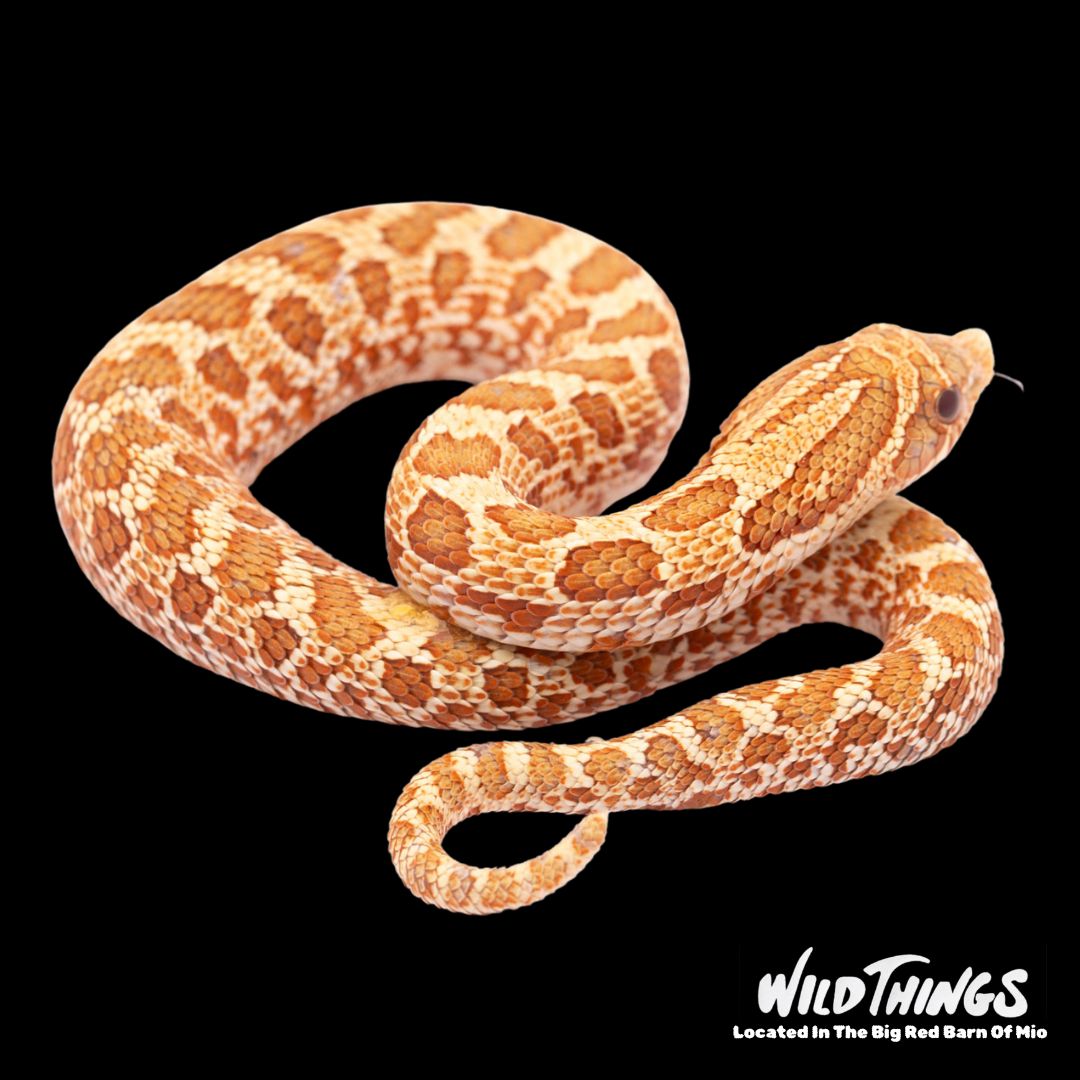AuSable River Outdoors
Toffee Morph Hognose Western
Toffee Morph Hognose Western
Couldn't load pickup availability
Species: Morph Toffee Hognose Western Snake
Scientific Name: Heterodon nasicus
Origin: They’re native to west-central North America, from Canada to Mexico.
Lifespan: 15-25 Years
Size: 36”
Enclosure Type: Your pet will spend at least 90% of its life in its habitat. Ensure that your snake has enough space, places to hide, and mental stimulation. Whether you decide to do a natural set-up and mimic their natural environment, or you go crazy with colorful bird toys and decorative figurines, even snakes appreciate things to climb, smell, and explore.
Enclosure Size: Minimum 36” x 12” (L x W)
Substrate: Suitable substrates include aspen shavings, arid bioactive substrate mixes, and a 50/50 mixture of washed play sand and topsoil
Décor: At a minimum, your western hognose snake’s enclosure should include at least two hides. Paper roll tubes and cardboard boxes work just as well as store-bought reptile caves. They’ll need to be replaced when soiled, but they’re free. While western hognose snakes are terrestrial, like most snakes, they enjoy climbing. Use wide PVC pipes, driftwood, and rocks. Hognose snakes are prone to falling from thin branches and vines. Rocks also serve as great basking spots. Feel free to add other organic materials, like dead leaves, grass, or even plants. Be careful not to use live plants with high water needs. Succulents and artificial greenery are perfect.
Water: Most snakes occasionally enjoy submerging their bodies. Provide a wide, shallow water dish for your western hognose snake.
Temperature: Ideal Basking Spot Temperature: 90-95°F. Ideal Warm Side Ambient Temperature: 80-85°F. Ideal Cool Side Ambient Temperature: 75-80°F. Ideal Nighttime Temperature: >70°F
Humidity: 30 – 50%
Lighting: At a bare minimum, your pet should receive exposure to a natural day and night cycle. The light can come from windows or artificial room lighting. As crepuscular critters, wild hognose snakes are naturally exposed to mild levels of sunlight – including UVB rays.
Type Of Diet: Carnivorous
Types Of Food: The western hognose snake’s natural diet consists of amphibians, like frogs and toads. Most captive snake keepers find rodents to be the most convenient prey for feeding their pets.
Feeding Schedule: Up to 12 Months: Every five days. 12+ Months: Every seven days. Breeding Animals: Every three to five days
Supplements: Snakes don’t require skin-synthesized vitamin D3 to absorb calcium. They receive all the nutrients they need from their whole-prey diet.
Share

